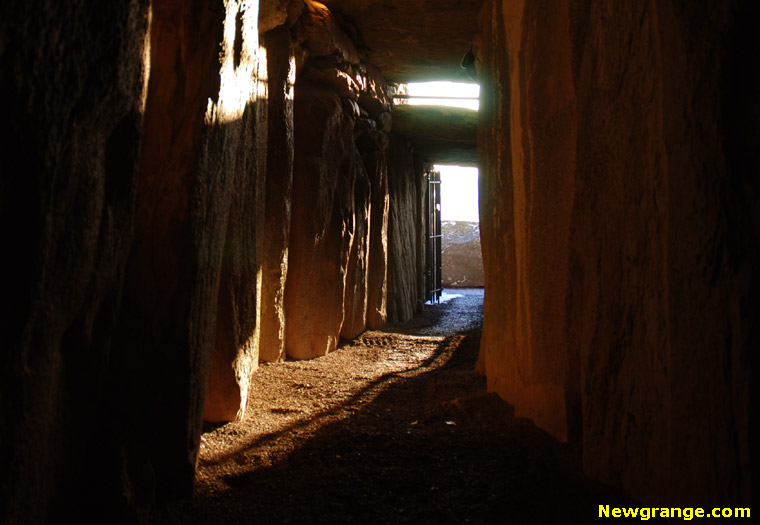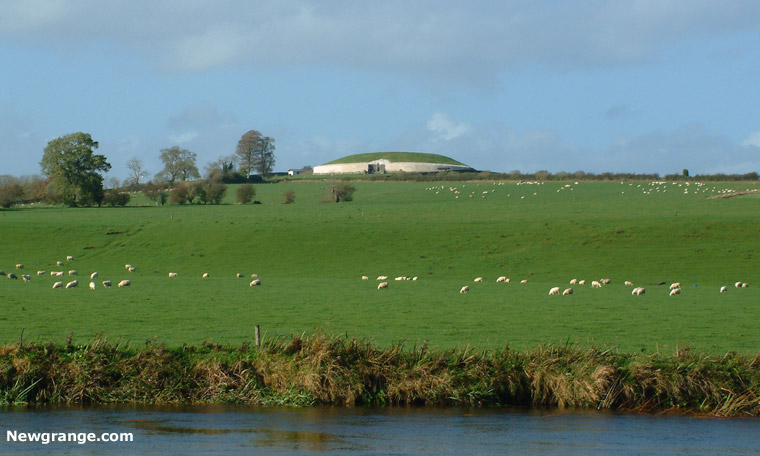A dynastic elite in monumental Neolithic society in Ireland
An article published in the journal Nature 17 June 2020, reveals the remarkable results of scientific analyses of human remains excavated from Newgrange and other Irish National Monuments.
An international team of archaeologists and geneticists led by Trinity College Dublin has shed new light on Ireland's first farmers in the Neolithic period (4,000BC-2,500BC).
Among the findings published in Nature is the discovery that an adult male buried inside the passage tomb at Newgrange in the Boyne Valley around 3,200BC may have been among a ruling social elite.
Analysis of the skeletal remains of this adult male, which were retrieved during archaeological excavations led by Professor M. J. O'Kelly at Newgrange in the 1960's, marks him as the offspring of union between parents who were very closely related. Such unions are a near-universal taboo for biological and cultural reasons, though given his privileged burial within the chamber of the Newgrange monument, the researchers suggest his parentage was very likely to have been socially sanctioned.
The Trinity College Dublin research group notes that socially sanctioned mating of this nature is very rare, and in global scientific studies has been documented almost exclusively among politico-religious elites-specifically within royal families that are headed by god-kings.
In globally documented cases of this, such as in Hawaii, the Inca empire and in ancient Egypt, such behaviour is typically limited to ruling families whose perceived divinity exempts them from social convention. Researchers have generally viewed such close unions as a means of intensifying hierarchy and legitimizing power. The evidence from this study suggests a similar dynamic may have existed in Stone Age Ireland which heralded the introduction of farming and saw the construction of large megalithic burial and ritual monuments such as the passage tombs in the Boyne Valley.
The suggestion of such a 'royal' close family dynasty during the middle of the Neolithic period coincides with the building of the great passage tombs of Newgrange, Knowth and Dowth and echoes medieval folklore associated with the World Heritage Site of Brú na Bóinne in the Boyne Valley. The 12th century Book of Leinster records the tale of a union between a sister and a brother which lent itself to the ancient name for the passage tomb at Dowth.
The team of scientists also revealed a relationship between the man buried at Newgrange and other individuals buried in passage tombs at Carrowmore and Carrowkeel in Co. Sligo on the west coast of Ireland.
The study was carried out by Trinity College Dublin in collaboration with University College London, NUIG, University College Cork, University of Cambridge, Queen's University Belfast, Sligo Institute of Technology and the National Monuments Service.
Source: National Monuments Service - Department of Culture, Heritage and the Gaeltacht - 17 June 2020

Winter Solstice illumination at Newgrange
Incest uncovered at the elite prehistoric Newgrange monument - an article by Alison Sheridan.
Abstract to the Academic Paper.
A dynastic elite in monumental Neolithic societyThe nature and distribution of political power in Europe during the Neolithic era remains poorly understood. During this period, many societies began to invest heavily in building monuments, which suggests an increase in social organization.
The scale and sophistication of megalithic architecture along the Atlantic seaboard, culminating in the great passage tomb complexes, is particularly impressive. Although co-operative ideology has often been emphasised as a driver of megalith construction, the human expenditure required to erect the largest monuments has led some researchers to emphasize hierarchy-of which the most extreme case is a small elite marshalling the labour of the masses.
Here we present evidence that a social stratum of this type was established during the Neolithic period in Ireland. We sampled 44 whole genomes, among which we identify the adult son of a first-degree incestuous union from remains that were discovered within the most elaborate recess of the Newgrange passage tomb.
Socially sanctioned matings of this nature are very rare, and are documented almost exclusively among politico-religious elites-specifically within polygynous and patrilineal royal families that are headed by god-kings. We identify relatives of this individual within two other major complexes of passage tombs 150 km to the west of Newgrange, as well as dietary differences and fine-scale haplotypic structure (which is unprecedented in resolution for a prehistoric population) between passage tomb samples and the larger dataset, which together imply hierarchy. This elite emerged against a backdrop of rapid maritime colonization that displaced a unique Mesolithic isolate population, although we also detected rare Irish hunter-gatherer introgression within the Neolithic population. Academic Paper
Boyne Valley Private Day Tour
 Immerse yourself in the rich heritage and culture of the Boyne Valley with our full-day private tours.
Visit Newgrange World Heritage site, explore the Hill of Slane, where Saint Patrick famously lit the Paschal fire.
Discover the Hill of Tara, the ancient seat of power for the High Kings of Ireland.
Book Now
Immerse yourself in the rich heritage and culture of the Boyne Valley with our full-day private tours.
Visit Newgrange World Heritage site, explore the Hill of Slane, where Saint Patrick famously lit the Paschal fire.
Discover the Hill of Tara, the ancient seat of power for the High Kings of Ireland.
Book Now
Home
| Visitor Centre
| Tours
| Winter Solstice
| Solstice Lottery
| Images
| Local Area
| News
| Knowth
| Dowth
| Articles
| Art
| Books
| Directions
| Accommodation
| Contact


